Hiro Yokose Paintings – Next Part of the Story
If you have been following me for a while, you may remember the two giant Hiro Yokose paintings I was asked to repair back in 2016…
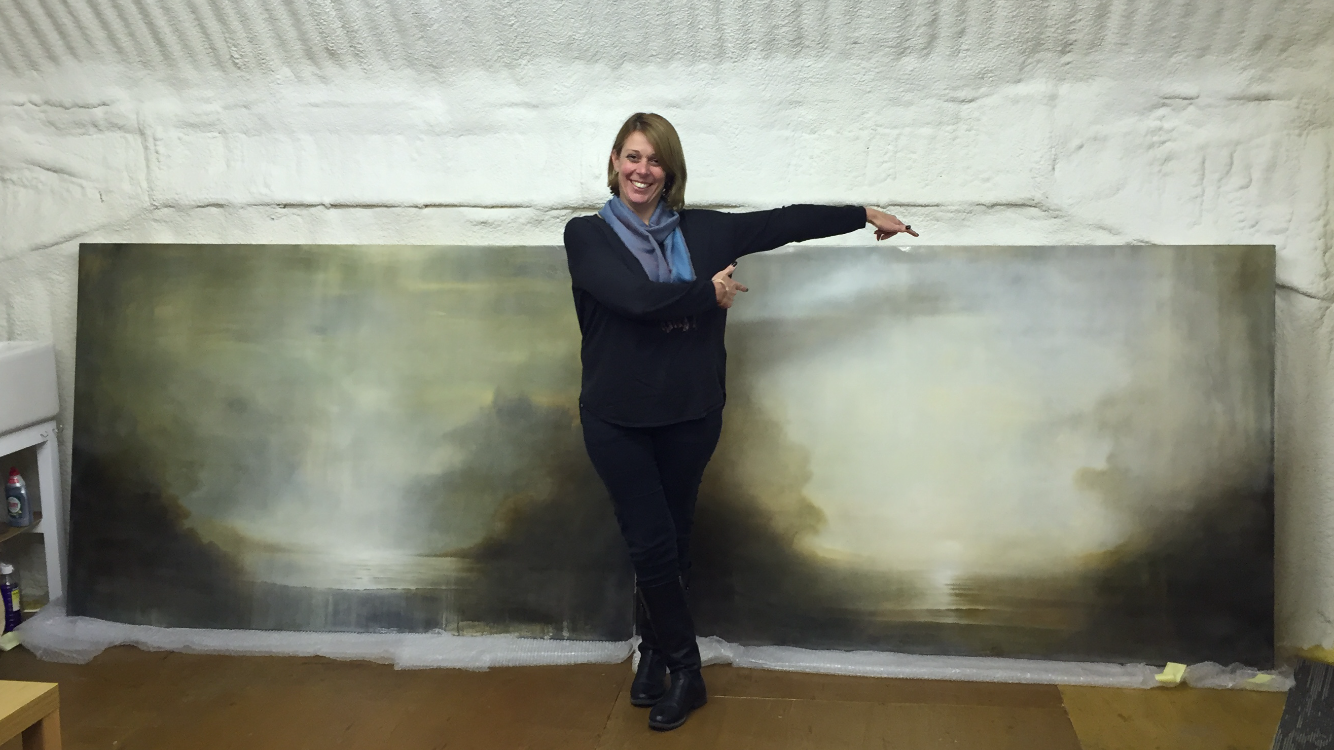
Here’s a link to the blog if you want a refresher, I still get palpitations thinking about it now….!
https://artyheaven.com/encaustic-paintings-repair-what-a-privilege/
Anyhow, in another little twist of that story, I was asked to go up and sort out some ‘blooming’ that had happened to them recently.
If you’re not sure what blooming is; it’s a natural occurrence that happens with beeswax, it’s totally harmless, and part of the curing (hardening) process.
You can see an example of blooming on this natural beeswax coloured block in the picture below.
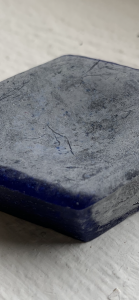
A light powdery substance comes out of the wax, which looks like a soft haze, it can simply be polished and buffed off with a soft cloth.
Anyhow, I thought it was an interesting little tale, so thought I would share with you here…
I arranged to go up to the London offices where they hang, and found the pictures looking like this on arrival, clearly in need of some attention…
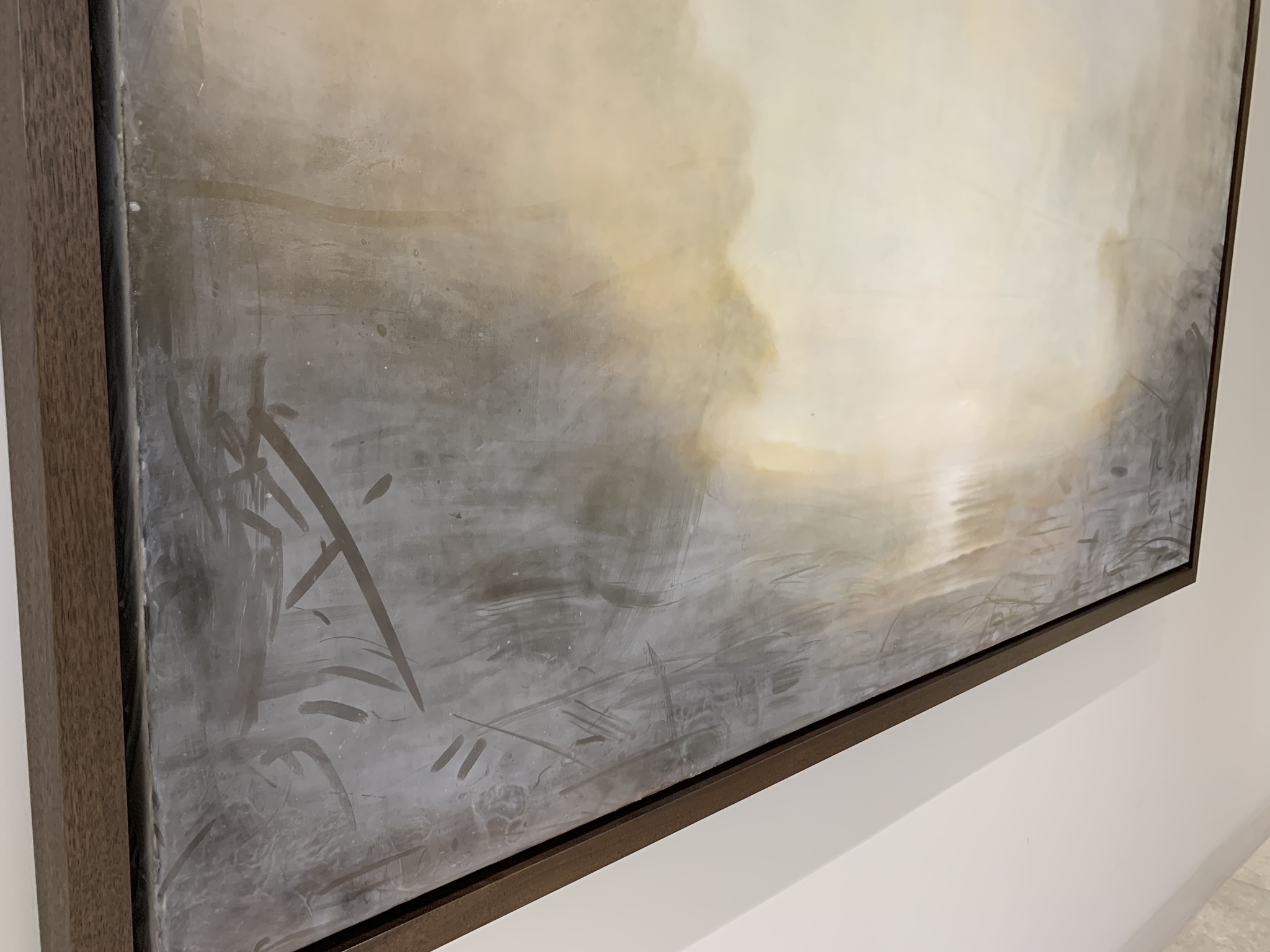

It was clear that people couldn’t help but wipe a finger over and touch the paintings, testimony to how tactile wax paintings are…!
It’s the first time I had seen a painting bloom this much.
I’ve noticed over time that pure beeswax seems to bloom much more than beeswax containing dammar resin, which I use in my paintings.
I’m presuming this painting has been created with plain natural beeswax, hence the extra bloom, and might also account for why they cracked (see original blog), adding dammar resin has the benefit of making the wax harder and more durable.
Anyhow, I had arranged to polish the paintings and show the staff how they should be maintained going forward, they were all a bit afraid to touch them after the angst we had been through with them a few years earlier!
It was great to see them, the frames looked superb, and really set the paintings off beautifully. John Jones did an excellent job of framing them, the colour choice and size was perfect.
I set about polishing the first painting, they were very securely fixed to the wall, so everything was able to be done in situ.
It’s a very zen process, you don’t want to rush it, or you can end up making more marks than you are removing. I like to polish in grades, using a softer finer grade cloth, or even the back of my hand towards the end. These are very large paintings, so I worked away in sections, with varying degrees of interest from passers-by coming out of their offices…
First painting done, I stopped for some lunch before moving to the second, and showing the two members of staff how to maintain and polish the paintings themselves going forward…
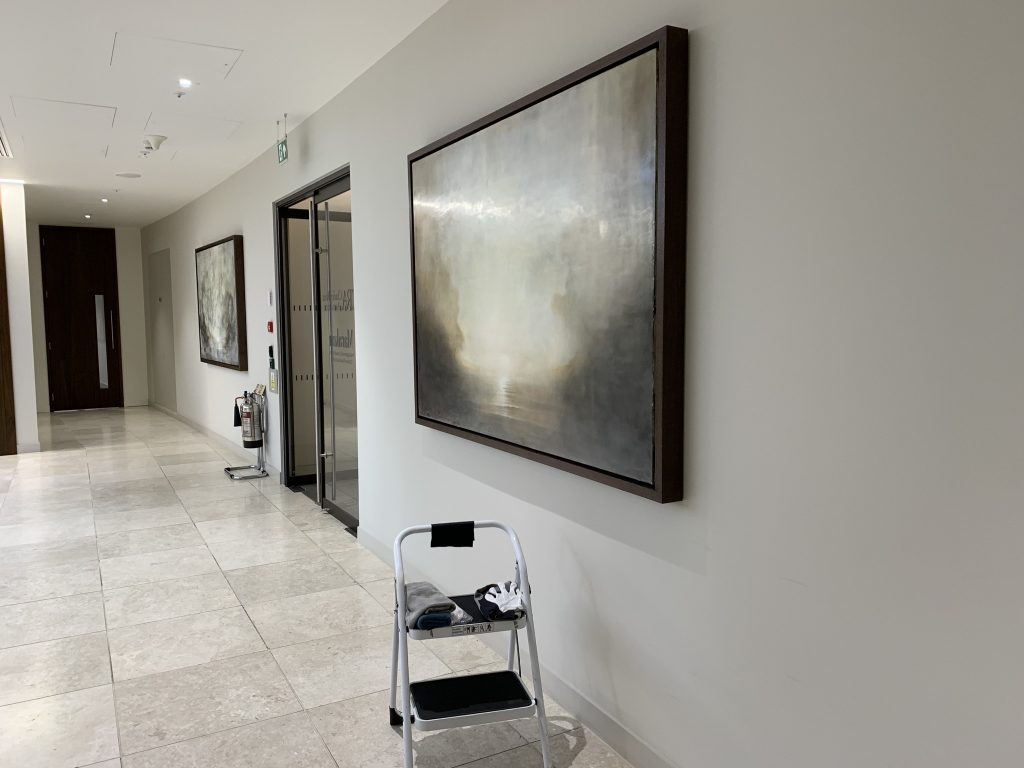
One of them got quite into it, and happily polished sections at a time until they were restored to their natural high gloss.
The other didn’t have the same patience for it, and decided they’d just call me back in a couple of years if they needed doing again!
It showed me that because I find something easy and therapeutic, it doesn’t mean that everybody finds it easy and therapeutic… horses for courses as they say.
I took some photographs during the process, it would have been better to take the before and afters from the same spot, but I was trying to be as unobtrusive as possible, whilst the staff and customers went about their business around me.
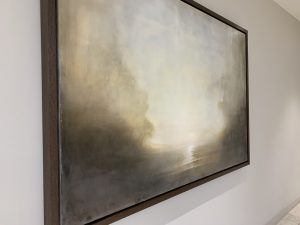

As you can see, the paintings have been buffed back their original lustrous state, and looking glorious once again.
If you want to know more about blooming and curing, feel free to get in touch, I hope you found this process and information useful, if you did, do let me know!
**UPDATE – NEW ENCAUSTIC REPAIRS ONLINE COURSE**
After a slow trickle of enquiries about repairs of encaustic wax work, as a result of blogs such as this one, especially from people overseas, where it’s not possible to ship the painting to me for repair… I have created a new resource, which should guide you through the process to repair your own painting. See full details here.
I hope you find it helpful….




Sorry, I was so excited about your website as I have many encaustic paintings and did not read further. Obviously using heat on a cold wax painting is not advisable.
Thanks for the info.
Hi Margaret – So sorry, I didn’t get notification of your comments… so I hadn’t seen this until now… 🙈 However, I’m pleased you found your answer on my site…! 😁
Delighted my website inspired, and you found the content useful… do connect on my social medias or my newsletter and keep in touch! (Details on my contact page)
Very best wishes, Julie. 🎨🐝✨💕
Thank you so much for this info. I have been an encaustic painter for 20 years and moved to the Cold Wax Medium a few years ago. Can your cleaning methods work on this medium also?
Hello there. Congratulations on your work!
~
I have a Hiro Yokose painting in Lisbon, Portugal that is in dire need of repair. Would you be available?
Thank you so much for your kind comment!
I have sent you an e-mail regarding this, I look forward to hearing back from you.
Best wishes,
Julie.